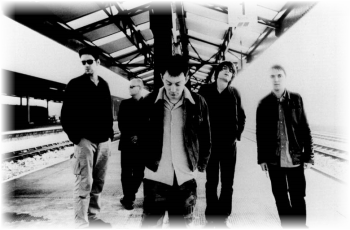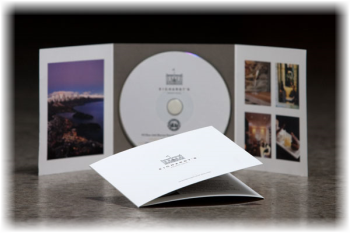602-904-5554 | Email Us | Shopping Cart
Latest News

Looking for ways to make more money with your music?
Today, we’re going to focus on strategizing to make a sustainable living.
By now, we’re all acutely aware that hardly anybody actually pays for music anymore.
That’s why if you want to make money, you need to diversify and add options that fans will be happy to pay for. You need to start thinking about sustainable things you can do that will allow you to make money with your art.
One thing that fans may REALLY want is to have an experience with you. Come up with some unique ideas for fan experiences and merchandise, and you’ll start to see a real difference in your bank account.

As many of you know, I avidly follow the latest trends in internet marketing, and gather nuggets of useful information for independent musicians.
The internet is a veritable treasure trove of information, but at the core of it all are three key principles to increasing your income. These principles are fairly basic, and critically important.
The Three Ways to Increase Your Income:
1. Increase your number of clients (fans).
2. Increase the frequency of purchase (how often your fans buy from you). To do this, you’d better have more than just music to sell!
3. Strategize to make a sustainable living.
Okay, none of these three things are brain surgery. But from a musician’s perspective, they bring up some interesting points.

Everywhere we turn in the music business, the impact on digital marketing, promotion, sales, performances and publicity is changing the way artists and bands, as well as record labels are carrying out there business.
What is strange to me is that with all the website work one has to update, and blogs to keep up on and text messaging and emails etc. etc. one thing remains true; the elements of what must be turned into digital items have their roots in the 'analog' world, especially when it comes to writing up a press release.
Today the traditional press kit still has its place. So, knowing how to write (and/or post) a professional press release can help you get the word out about what's going on with your music career.
Here is a guideline for writing a professional press release:

Self-promotion in the music industry is a topic that has been explored extensively over the past 20 years. Some of the basic ground rules are the same that apply to any business or freelancer. Most people in the industry, however, bands included, don’t know a whole lot about it. Many prefer to hover around the topic of social media because it’s all they know. After all, once you call yourself a “social media coach”, there’s really not much room for expansion besides posting an analysis of every new Twitter or Facebook development/etc. Artists flock to new music technologies, discovery platforms, unsigned networks, indie authorities, and crowd funding platforms looking for the answer, and yet, the message generally being sent to the artists tends to do them a disservice. Promises, promises. Even the term “submit your music” can be very misleading. Submit it where? Well…the junk folder, to be blunt.
Just as people starting businesses often under-estimate the amount of work necessary, so do unsigned musicians and bands. A quick disclaimer: it IS possible to be very successful as a musician in 2013. You can do it. It’s helpful, though, to do away with some of the lies that we typically accept from today’s music authorities, and I’ll go over some of those here. The intention isn’t to be overly blunt. Just to tell the truth. Below are some reasons why your music self-promotion may not be working.
1) You’re waiting in line.
It’s wonderful that there are so many services for artists to use to send their music to either industry professionals, festivals, blogs, magazines, and radio promoters such as Sonicbids and Music XRay. Mixed feelings abound about these sites, but to call them positive or negative would be a snap judgement. Does it suck that it costs $40 to simply apply for X music festival given that this is a digital submission we’re talking about, and chances are your music will not receive a fair listen? It sure does. Would it possibly be a life-changing experience if you were chosen? It certainly would. Musicians today are accustomed to waiting in line for just about everything. After all, it’s busy as hell out there. While it’s necessary to wait in some lines, and good results can come of that, if you merely play by the rules and wait in lines you’ll get stagnancy, and that isn’t a very fun gift to open up for Christmas.
Artists need to think as creatively in their promotions as in their songwriting. Outsource your duties. Get momentum by getting freelancers on your side. Promote outside of the music blog arena. Hire people to promote your music; preferably a lot of them. Get the forums buzzing. Get people requesting your music. Get people writing about your music. Donate to blogs you like. Use Fiverr and similar micro-job sites. Read Tim Ferriss. Read business books. Get out of the “band” mentality. Ignore the music authorities and start infiltrating.
2) You’re only promoting on social media.
Don’t get me wrong. Social media, when used correctly, can have a massive effect on your success. The only problem is, since most industry guru’s and music marketing publications tend to focus on social media exclusively, the current generation of artists are spending all of their time posting, pinning, tweeting, hashtagging, reblogging, liking, sharing, tagging, stumbling, digging, and cultivating the perfect “reddiquette”, but in the end, without the proper balance, the result is something close to a Warcraft or Angry Birds addiction. Time down the memory hole.
It’s easy to forget that not everyone hangs around on these networks, and even if they do, they’re often tuned into only what their personal perceptual filters will allow; not something new. It’s important to keep your communication skills in tip-top shape, to send actual, conversational emails, make phone calls, and speak with promoters in person. The worst faux pas is messaging companies or industry people through networks such as Facebook. These often go unanswered, as these networks are riddled with spam, and real messages get lost in the shuffle. Send a real, personalized email and notice the difference.

Becoming a model can be easy, or it can be difficult, depending on how you approach it and the people with whom you associate.
Here are 5 expert tips to get you started on your modeling career.
1. Get an Honest Evaluation by Several Respected Professionals
It is very important to get the opinion of more than one agent or scout because many agents and scouts specialize in just one particular area. Some only represent editorial (high fashion) models, and others may only represent commercial models, child models, plus-size, showroom and fit models or petite models. Just because one agent can't represent you, it doesn't mean that another agent won't. Getting the opinion of several different types of agents is the best way to find out if you have what it takes to be a model.

Ever notice how the camera just seems to LOVE certain people, but the rest of us end up with triple chins, mysterious red blotches, and half-closed eyes? Yeah, I feel your pain.
Getting a halfway flattering portrait of one person is often a challenge, but when you compound the problem by attempting to capture an entire group of people in one good shot...well that can seem darn near impossible sometimes.
Fortunately, I've managed to pick up a few posing tips & techniques over the years that have really bailed me out of a number of tough situations. The good news is that most of these techniques work equally well, regardless of whether you're shooting a family portrait, a band promo, or perhaps even a group photo for some company executives.
So without further ado, let's get on with the good stuff...

Promotional photos serve many purposes for music journalists beyond just being something to feast our eyes upon. They introduce us to the people behind the music and help create or reinforce a narrative of a band, which can aid us in our writing process. They grab readers' attention and can make more people inclined to check out a story. They sometimes even make our articles easier to read by breaking up otherwise dense chunks of text. We love promo photos and who can blame us?
One thing most people don't know is that from where we're sitting, the functionality of a promo photo is often as important as any other element. In our deadline-centric worlds, we need to round up artwork fast, and those images often have to meet exacting standards of size or style (for example, some magazines won't run live shots outside of concert reviews). With all of that in mind, here are five elements essential to music journalists when it comes to promo photos.

A good band photo can make the difference when it comes to getting your band featured in a magazine. It may seem pretty simple to whip out your phone, click a couple of shots and send them off, but getting your best band photos should involve more than that ... a lot more.
Here are some tips and tricks to consider when taking band photos, plus some advice for the budding band photographer in you.
The Best Band Photos Start Here
When considering how to get your band photos done, you should keep these five points in mind:

Even if you’re relatively new to the musician world, you’ve probably heard the term “press kit” thrown around quite a few times by now. A press kit is a package of materials that you might send to record labels, media outlets, venues, etc. that contains all of the pertinent information about your band. But what does that mean exactly? What is and isn’t relevant information?
You’ll want your press kit to follow some basic standards if industry people are going to look at it. Here are a few tips and essentials on putting together the ultimate press kit.
Band Photo
The first thing in your press kit should be a hi-resolution photo of the band (or yourself if you’re a solo artist.) This can be black and white or full color. There aren’t a whole lot of rules when it comes to taking a great band photo (although you might want to stay away from some common clichés such as railroad tracks and brick walls). But you should definitely make sure of at least two things: everyone’s face should be easily seen in the picture, and the band’s “image” should be on display. If you play dark metal music, it might not suit your image to be wearing bright colors and lying in a field of flowers. If you’re an upbeat pop band, it might not fit to be wearing all black and looking dreary. Let your band’s character shine through!

As creative and expressive musical artists, we’d like to believe our music speaks for itself. It does, of course, but a well-crafted artist bio is still a necessary part of your press kit and promotional efforts. In addition to giving the reader a glimpse into your musical career/journey/accomplishments to date, an engagingly written band bio can increase the chances of your music getting heard, whether you’re approaching music journalists for press coverage, creating an electronic press kit, or just trying to draw in casual visitors to your website.
It’s no easy task to create a song that speaks to a wide audience and carries your unique fingerprint – and crafting a compelling and accessible artist bio can prove just as daunting. To help shed light on how to create a stellar band bio, I sought advice from Cary Baker, founder of the Los Angeles music publicity firm Conqueroo. Prior to starting Conqueroo, Baker served as VP of Publicity for Capitol Records, I.R.S. Records, and other labels – and before that, he worked as a music journalist for publications like Billboard, Mix, and Creem.
More...

You want to take great band photos, don’t you? Not just ones where everyone’s in focus and the bassist remembered to wipe the stalactite of spit from his upper lip?
Yeah, of course you do. We all do — especially when the difference between your music getting ignored and getting big exposure in the press often comes down to one thing: having great band photos.
But in order to get that great shot you’re going to need the right clothes, the right setting, the right lighting, the right expression at the right moment, and the right photographer to catch it all in one instant. For many of us, that’s already a tall order. Now consider this: a single band photo is not enough.

Dear (new’ish) Model,
My name is Other Model. I have spent the last couple of years finding out a few things that I wish I’d known from the start. Please don’t think I’m patronising as I mean this only in goodwill, as there is absolutely no gain for me by sharing these cheats. Not all of my points will be valid for you as posing varies in each genre. Just take what you can and ignore the rest. If only one suggestion helps your future career then my time has been well spent…
Rule one, the mirror is your BFF. Stand there, perfect your poses and learn how your body shapes. The mirror is a perfect tool to show you what the camera can see – try to imagine it behind your photographers head when shooting and always consider what can be seen from that angle. For example, if your foot is closest to the lens, it is worth remembering that your foot is going to the largest thing in the picture….and nobody wants to be remembered as Bigfoot…

If you’re a singer, musician, or in a band, educating yourself about the music business and music marketing is so important. Marketing presides over all promotional activities your band does and is second only to the music you create. In this post I will give you a top down overview of music marketing, and give practical tips to help your band grow beyond your local scene or social media followers.
How Do Record Companies And Artist Managers Market Bands?
I’ll admit, when I was musician and even when I was beginning my music business career, I had the wrong idea about music marketing. I often confused marketing with promotion or the day to day activity of publicizing a band. And after working with hundreds of artists as the GM and Head of Sales of Fearless Records for 13 years, and at Sony it became clear to me. I learned that marketing begins with the brand you create. Get to the root of what you are really about, and then convey that to your “market”. Consequently, great bands understand why they do what they do and know how they want to be perceived. These are for you and your bandmates to decide, and with the tips below you’ll be able to get started right now.
What Exactly is Marketing?
The best definition of marketing I have come across is “marketing is a battle of perception, not products.” – source: Al Ries and Jack Trout’s book the “22 Immutable Laws of Marketing”. It means you need to be first in the mind of your scene and the leader. This is key to the name behind this website and the concept of “heat on the street”. Strive to be the “first in mind” in your genre and let that perception spread like fire.
There is a great quote from Daniel Glass proprietor of Glassnote Records (Mumford & Sons, Phoenix, The Temper Trap) talking about the Mumford & Sons marketing plan.
“There was one line in the marketing plan. Get people to see them live. That was it” – Daniel Glass on the Music Business Worldwide Podcast
I love this quote because when you’re struggling it reminds you that you have to start with the core of your brand and “why” people should care.